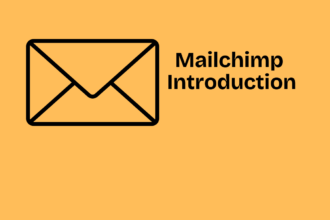SEO (Search Engine Optimization ) is a beneficial tool of marketing that drives organic traffic – which means the clients driving to your Website. SEO is necessary for small brand owners and those who are running e-commerce websites.
Don’t stress if you do not have a large amount of budget to afford SEO expert hiring.
There are multiple strategies and tools of SEO which are helpful and easy to use.
After you have SEO basics down and next step is to decide if you wanted to take your SEO optimization to another level with the help of an SEO professional. In this blog we have provided 6 steps that you follow to get the results with DIY SEO:
- Set Your Organic Search Baseline
Improving Your Site ranking in the Search Engine is SEO. Baseline figuring out is the first step: How your website is visible now? You can get the answer to this question with the help of Domain Overview. You can see how visible your domain is on desktop and mobile, and you can get an over outline of both paid traffic and organic (e.g., from PPC ads on Google). The all-i
inclusive reports cover even backlinks to metrics.
image
Audit of SEO should include just the website, nevertheless. It also should surround the websites of your websites because of that you will know better how many shares your industry search volume. With the help of Semrush domain overview tool to highlights your main organic competitors, and websites competing in your niche to get online traction. This will let you the areas for growth and provide you with inspiration sources.
Set Up Search Analytics
Google and Bing’s tools offered which marketers can use to set up a baseline for their search position, in this blog below we have provided you a guide on how can you track your domain using one of these analytics tools.
Here is How you can Set up an Account with Google Analytics:
Step 1: Create an Account on Google Analytics.
Step 2: Set up your “website” (“property”)
Step 3: In your property set up “reporting view”. With the help of this, you can filter data, for instance, based on defined sales regions or IP addresses.
Step 4: Will they ask you to insert a tracking code to your website, and analyze it, which wi allows Google to collect data?
Step 5: After that, you can start viewing your data. How to filter different views to focus on the data points you find more relevant in this guide from Google.
Here’s How You Can Set Up the Bing version of onAnalytics (Bing Webmaster Tools )
(i) You can use a Google, Microsoft, or Facebook account to sign up for Bing Webmaster Tool.
(ii) Then add a website to your account.
(iii) Bing offers 3 means if you are a website owner: XML File authentication, meta tag authentication, or adding a CNAME record to DNA.
(iV) You can start tracking data after uploading your site maps. With the help of this starter guide, you can take through this process in more depth.
- Research Relevant Search Queries and Keywords
The heart of Strong SEO Campaigns is Keywords. These are the phrases or words which searchers plug into Google, Yahoo, and Bing Search Engines which brings them to Your website. Target Keword Identifying which aligns the content of your website and the target audience’s search intent match is important. With the help keyword research tool, you can learn which keywords perform the best.
For Example, Semrush has so many powerful tools which assist keyword research. With the help of our Organic Research tool which allows you to see which ke are most often words and which keywords bring traffic to your competitors. See who you are competing with for searched the top position on SERPAS, Discover Easily new competitors, and seseeho are you are competing with for the top ranking in SERPs (Search Engine Result Pages ), domain changes observe, and many more!
Semrush also provides you tools with the help of which you can see the performance of your Website for your content and keywords. To help you decide on keywords to target with efforts of future blogging you can see related keywords ( any particular which might be slow-hanging bread and butter for a fast win in the rankings).
image
- Publish Optimized Content
You can start crafting high-quality content which will make up a heavy portion of your marketing strategy of content once you have identified a valuable keyword. Follow these steps if you are wondering how to do your SEO Content.
(i) Include Long tail keywords that are primary in the text. Keyword Stuffing never [ractice it. Algorithms of Search engines do not reach positively to the keywords overuse.
(ii) In the H1 tag includes your primary keywords.
(iii) Select keywords that are secondary and complement the primary keywords logically. A primary keyword may be “root canal”, and a logical secondary keyword might be “cavities” if you are creating a webpage about root canals for a dental website. Consider also building out the content pages for these keywords which are secondary and then providing internal links to those pages.
(iv) Involve the primary keywords in the page meta description in the title tag.
(v) Think about utilizing any plug-ins which are accessible for content optimization. WordPress for example provides plugins that help you increase your on-page SEO efforts.
(vi) Remove the old content before producing your new page make sure that your new content is uploaded to an existing landing page. With this help, you can avoid duplicate content, which will harm your Rankings in Google Search.
(vii) Copy the other page elements because your developer team is dealing with a large backlog of change requests if you are having trouble updating meta tags. With the help of PageImprove and Egde SEO, solutions allow you to make indexable, intent, and reversible changes website.
- Analyze Your Backlinks
Content that is valuable to the end-user Search Engine Prioritize that Content. To assess value, Google has even established loose criteria, the EAT principle: authority, expertise, and trustworthiness. Links from other websites to your own (Backlinks) help out build EAT. Links from high-traffic domains and high -authority are the most pursued and valuable as a part of your strategy of Digital Marketing.
With Backlink Analytics, you get details about referring domains which include IP distribution and anchor texts. There is one more valuable tool which is the backlink gap tool which will help you identify websites in your niche having earned the most backlinks in the past. To discover what backlinks you might be missing this is a fantastic way. After that, you address these gaps. There are so many useful strategies, from writing guest posts on other platforms to creating shareable infographics.
- Explore Technical Issues
Your DIY SEO Strategy needs also to take technical issues into the account. We have created an SEO checklist which is a great place to start.
For instance, make sure to use HTTP, a well-known factor of ranking in Search Engines. This provides a coder which keeps data that is passed through your Website secure which includes sensitive potential data. This guide also advice on how to fix crawl errors and how to improve page speed.
- Stay Informed
SEO (Search Engine Optimization) is an always developing industry. This is why specialists dedicate their entire careers to it! Search Engines Like Google or Bing are every time changing their algorithm and changing the factors which influence SERPs (Search Engine Result Pages). Staying up to date on SEO news and Following nloggers in the industry. The Google Search Central Blog , Google formally Webmaster blog , is a great point to start.
SEMrush Makes DIY SEO Easy for You
If you are noe also thinking ,”Can i do do myself SEO?”



